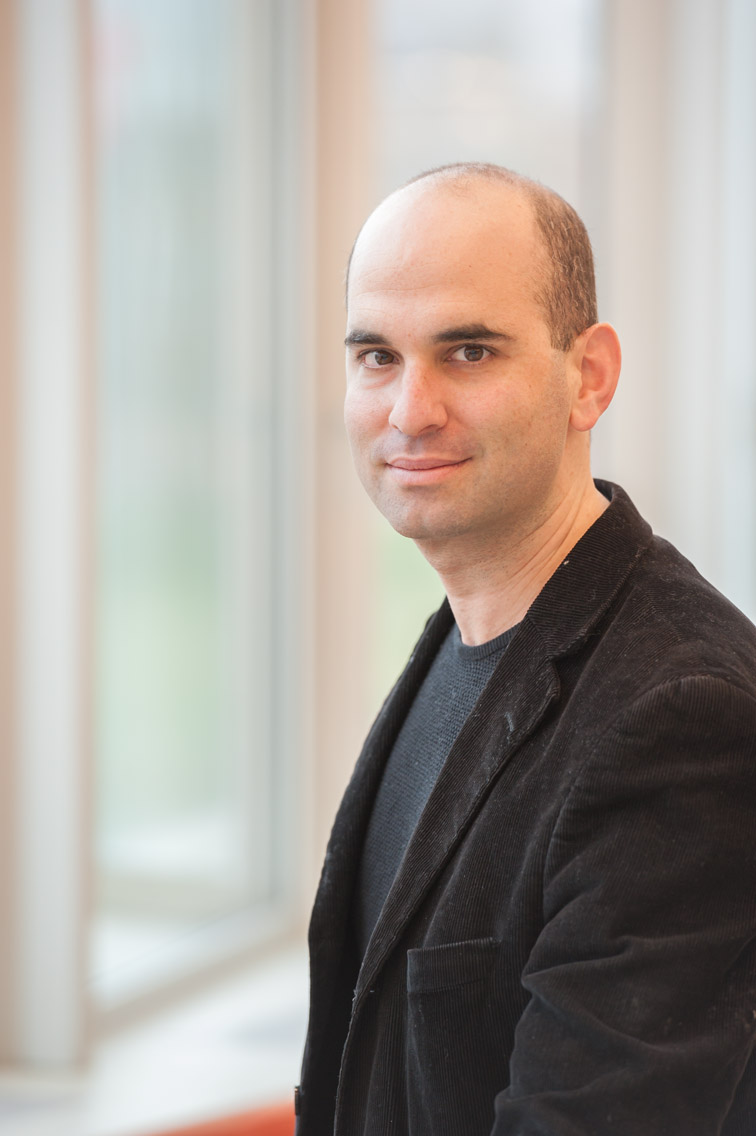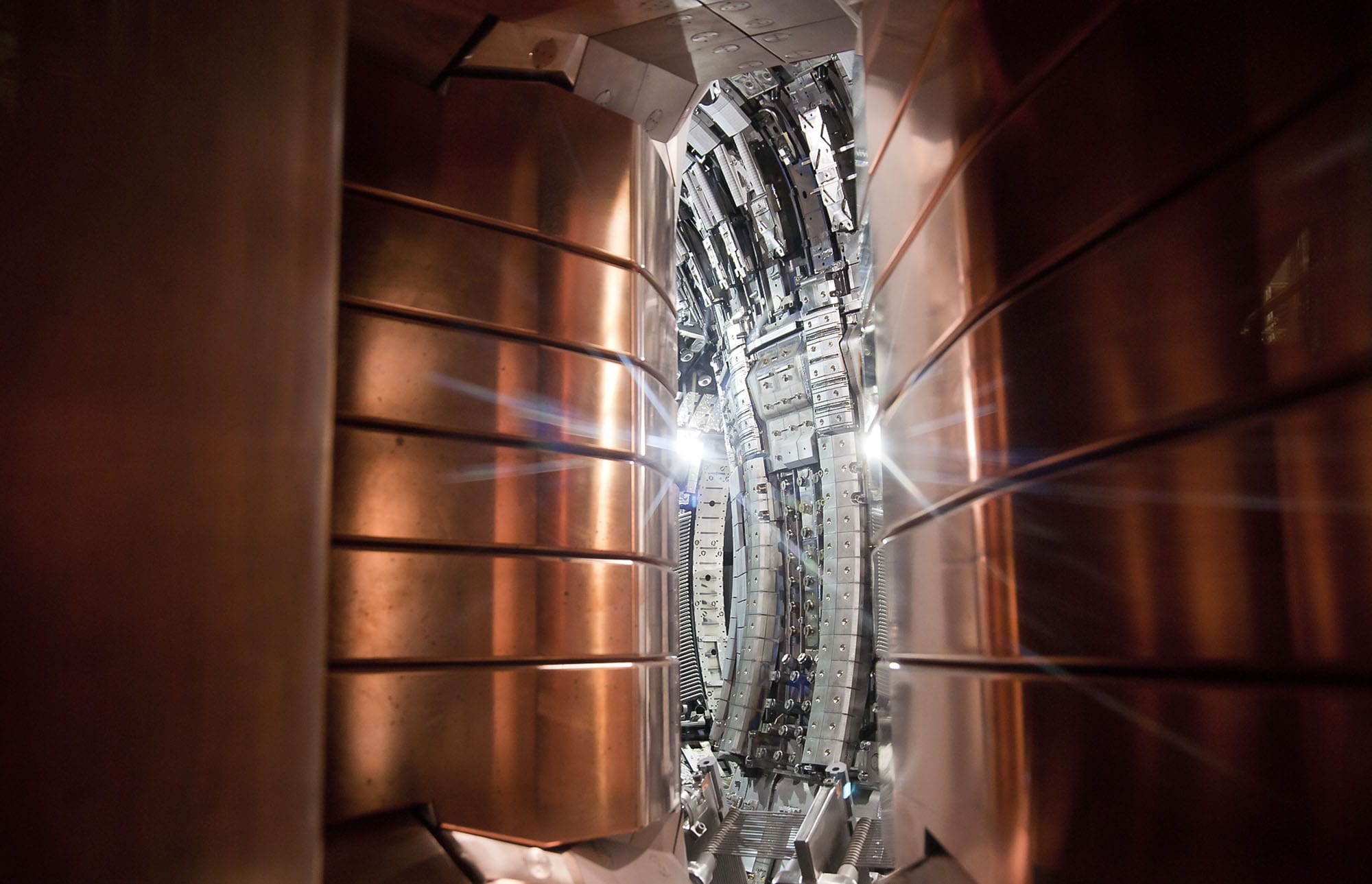Jonathan Citrin is one of the hundreds of scientists in the collaboration working on the Joint European Torus (JET) experiments. He leads the Integrated Modeling and Transport group at DIFFER. His group contributed so called “Predict First” tokamak simulations to the JET deuterium-tritium (D-T) experiments.

Photo: DIFFER
JET established a fusion energy record. How exciting was this campaign for you?
Jonathan Citrin: "It was very exciting. It was a testament to the heroic efforts of the engineers and experimentalists that it culminated in a series of record shots in the last sessions of the campaign. In spite of the covid situation, we could witness fusion history being made through a video conference link to the control room."
What did your models predict for the D-T experiments?
“The JET D-T campaign goal was to produce 10 megawatt of fusion power for an extended period of time, as opposed to transiently. Our models predicted temperatures, densities, and rotation in the tokamak plasma core. First we have validated the models on reference deuterium scenarios. Then we extrapolated the performance to D-T to see if the predicted fusion power is in line with the targets. We had very encouraging results, whereby the experiments were projected to reach the performance goals. The results were reported at the IAEA Fusion Energy Conference in May 2021 by the JET team.”
How does your group relate to other EUROfusion researchers in the JET collaboration?
“There are a huge number of people involved in the JET experiments. There's the session leader who operates the machine. There are the scientific coordinators who organize the actual experiment. They decide in what direction to go to, what scientific questions to ask, how to get to the good performance. And then there is a whole team of diagnosticians, people who are responsible for the different measuring devices and their post-processing. They are the ones who are ultimately responsible to validate data for a given shot. Then there are modelers like myself and people on my team, who simulate the behavior of the tokamak plasma. Our interaction with the diagnosticians and experimentalists is key, both for ensuring that we are working with validated data, and also for understanding the ramifications of our results on the experimental strategy. We also support other modelers with the specific plasma predictive models that we develop at DIFFER.”
How do you involve measured data from previous campaigns?
“First we validated our models by comparing simulations to data from previous experiments. The quality of these comparisons tells if we can trust our models for extrapolating to future experiments, or if there are aspects that must be improved. We also interpret the physics mechanisms behind the plasma behavior, through detailed analysis of our simulations. Once we were satisfied with the model, we went on and predicted what would happen in future experiments with tritium or D-T. The achieved fusion power was indeed in line with the predictions. In the coming months we will analyze the specifics of the D-T experiments and the veracity of our original extrapolations in much further detail.”
What are your tools for modeling and simulations?
“The tokamak simulator we use is the JINTRAC suite, which incorporates a whole host of plasma models for heating, plasma transport, magnetic equilibrium, and more. Our focus is on applications of the turbulence model QuaLiKiz – embedded in JINTRAC – and co-developed at DIFFER together with colleagues in CEA Cadarache. We have also developed neural network surrogate models of QuaLiKiz, to get the same results but much faster. The speed of the neural network models is very helpful for doing very large amounts of simulations needed for optimization of the JET experiments and extensive simulation sensitivity tests.”
Is there something in particular that you would like to learn from the new D-T experiments in JET?

“There is a lot of very interesting physics about what happens to the plasma, the performance, the instabilities and the turbulence, when you go to a heavier hydrogen isotope. A lot of that physics is not in our present day models and there are some elements of the models that we cannot really predict. For certain boundary conditions for example, we have almost no choice but to base them on empirical extrapolations. That means that we can see what happened in the experiments when going from hydrogen to deuterium. And then we carry through that trend from deuterium to tritium. This extrapolation strongly affects the rest of the pure predictive simulation. So it is very important to learn from the tritium experiments and see if those extrapolations actually hold. The new results help us to refine our models when we have the full scan of all the isotopes species, and then we can try to understand the physics better.”
“What we would also like to learn is about the role of the energetic helium ions produced by the D-T fusion, and how they impact plasma stability and turbulence. Actually for the last ten years I've been involved with research on these energetic ions and we think that they may actually help stabilize the turbulence. So I'm very curious to see in the results whether the performance is even a bit better than predicted. It would be great if the energetic ions help to stabilize the plasma indeed.”
The results of the D-T experiments are very important for ITER operation in the future. For this operation, many scientists and engineers will be needed. Do you think that people educated in your field will work for ITER in the future?
“I hope so. JET is important as a sort of preparation for ITER operation, both in terms of the physics and the scenario development, but also in terms of training. We have to know how to drive the tokamak, how to do the experiments, how to work with data. I think this kind of experience is critical to maintain until ITER operation. This holds also for other tokamaks that are coming online soon, like JT-60SA in Japan, which is a European machine as well.”
ITER is the world’s largest fusion experiment. Is your work affected by ITER requirements for modeling?
“On the physics side, ITER will operate in regimes not typical for present-day devices. So there is effort in both carrying out dedicated experiments and modeling as close to these regimes as possible, for targeted model validation. On the tooling side, ITER is adopting a standardized data description and tokamak modeling software infrastructure, named IMAS. This will facilitate model validation for ITER simulations by reducing machine dependence of the modeling workflows and data analysis tools. We are now making efforts to shift our modeling tools into the IMAS framework.”
More information:
European researchers achieve Fusion Energy Record
DIFFER group Integrated Modeling and Transport
Qualikiz website
Go to the News page.